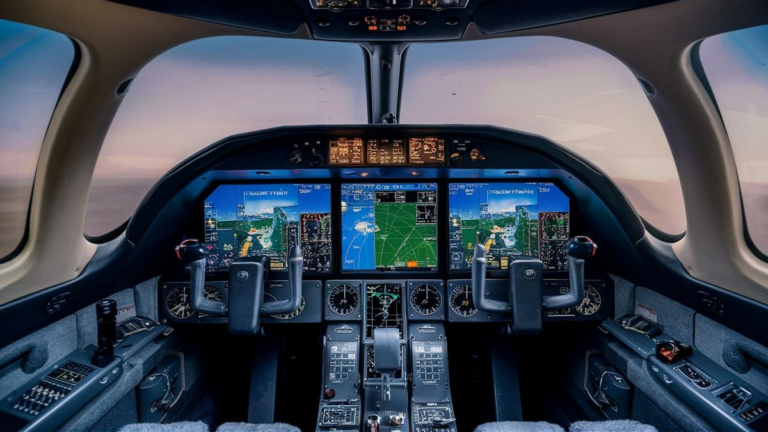TCAS, or Traffic Collision Avoidance System, is a crucial component of modern aviation technology designed to enhance safety by preventing mid-air collisions between aircraft. This sophisticated system is instrumental in maintaining the integrity of airspace and ensuring the safe operation of both commercial and private flights.
The Importance of TCAS
TCAS plays a pivotal role in mitigating the risk of mid-air collisions, which could have catastrophic consequences for passengers, crew, and bystanders on the ground. By providing pilots with real-time information about nearby aircraft and issuing advisories to avoid potential collisions, TCAS significantly reduces the likelihood of accidents in congested airspace.
How TCAS Works
TCAS operates by continuously monitoring the airspace surrounding an aircraft through the use of onboard transponders. These transponders communicate with similar systems on nearby aircraft, exchanging vital data such as altitude, heading, and velocity. Based on this information, TCAS calculates potential collision threats and issues advisories to pilots to take evasive action if necessary.
TCAS Modes
There are several modes of operation within the TCAS system:
- TCAS I: Provides pilots with traffic advisories (TAs) to alert them of nearby aircraft.
- TCAS II: In addition to TAs, TCAS II offers resolution advisories (RAs) that instruct pilots on the appropriate maneuvers to avoid collisions.
RA Maneuvers
When TCAS issues a resolution advisory, it prompts pilots to perform specific maneuvers to maintain a safe distance from other aircraft. These maneuvers may include climbing, descending, or maintaining altitude to avoid potential conflicts.
Regulatory Standards
TCAS is subject to rigorous regulatory standards set forth by aviation authorities worldwide, including the Federal Aviation Administration (FAA) in the United States and the European Aviation Safety Agency (EASA) in Europe. These standards ensure that TCAS-equipped aircraft adhere to strict performance and reliability criteria.
Evolution of TCAS
Since its introduction, TCAS has undergone significant advancements to improve its effectiveness and compatibility with emerging technologies. Manufacturers continue to innovate TCAS systems to enhance situational awareness and collision avoidance capabilities in increasingly complex airspace environments.
TCAS stands as a testament to the aviation industry’s commitment to safety and innovation. By providing pilots with timely and accurate information about nearby aircraft, TCAS helps prevent collisions and safeguard the integrity of airspace. As technology continues to evolve, TCAS will undoubtedly remain a cornerstone of aviation safety for years to come.
Frequently Asked Questions
Here are some frequently asked questions about TCAS:
| Question | Answer |
|---|---|
| 1. What are the different modes of TCAS? | TCAS operates in two main modes: TCAS I and TCAS II. TCAS I provides traffic advisories (TAs), while TCAS II offers both TAs and resolution advisories (RAs) to instruct pilots on evasive maneuvers. |
| 2. How does TCAS determine potential collision threats? | TCAS determines potential collision threats by continuously monitoring the airspace surrounding an aircraft through onboard transponders. These transponders exchange data with nearby aircraft, including altitude, heading, and velocity, allowing TCAS to calculate potential collision threats. |
| 3. What are resolution advisories (RAs)? | Resolution advisories (RAs) are instructions issued by TCAS II to pilots to perform specific maneuvers to avoid potential collisions. These maneuvers may include climbing, descending, or maintaining altitude as directed by the TCAS system. |
| 4. Who sets the regulatory standards for TCAS? | Regulatory standards for TCAS are established by aviation authorities such as the Federal Aviation Administration (FAA) in the United States and the European Aviation Safety Agency (EASA) in Europe. These standards ensure that TCAS-equipped aircraft adhere to strict performance and reliability criteria. |
| 5. How has TCAS evolved over time? | Since its introduction, TCAS has undergone significant advancements to improve its effectiveness and compatibility with emerging technologies. Manufacturers continually innovate TCAS systems to enhance situational awareness and collision avoidance capabilities in increasingly complex airspace environments. |
Enhanced TCAS Capabilities
Recent developments in TCAS technology have led to the introduction of enhanced capabilities aimed at further improving safety and efficiency in air travel. These enhancements include:
- Integration with other avionics systems for seamless data exchange.
- Improved algorithms for more accurate threat assessment and resolution advisories.
- Enhanced communication protocols to reduce the risk of false alerts and improve system reliability.
See also:






